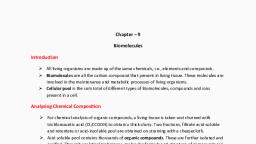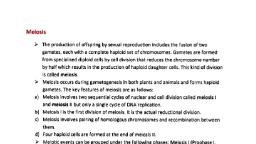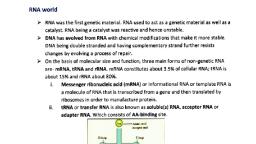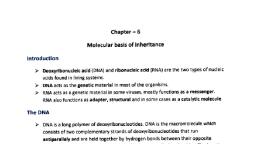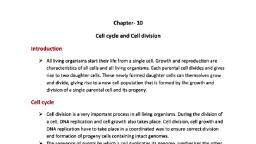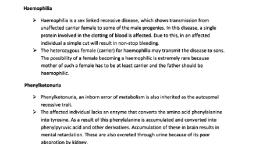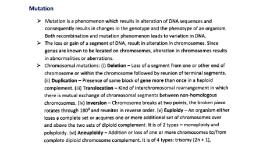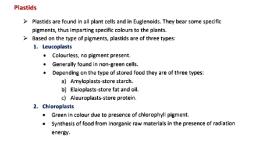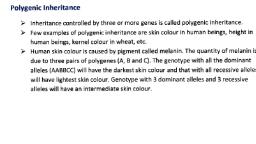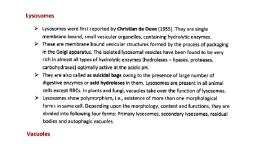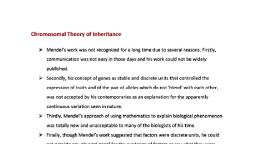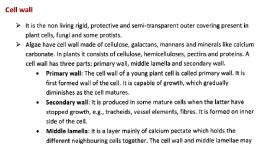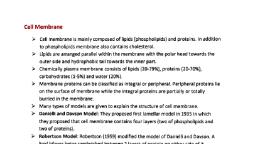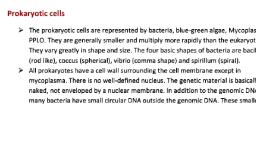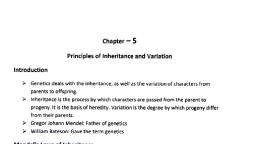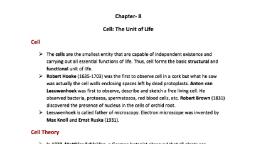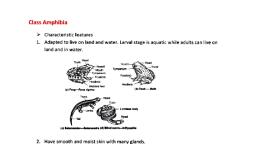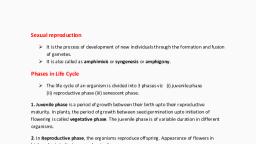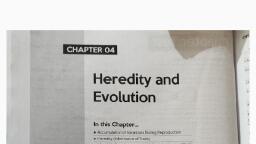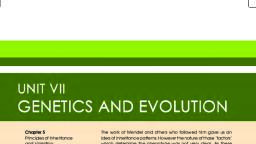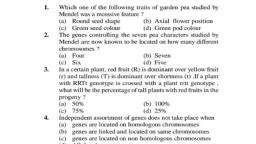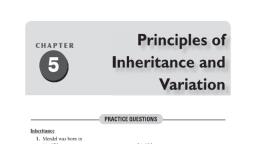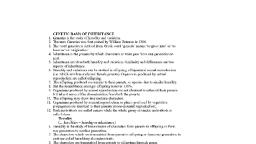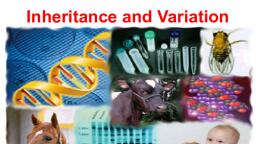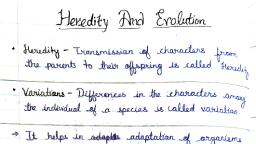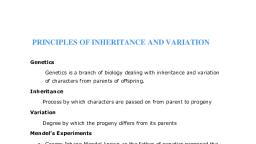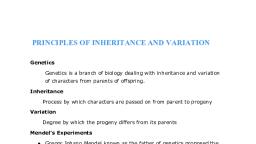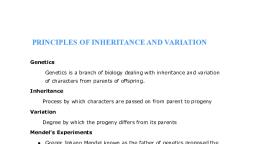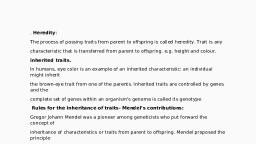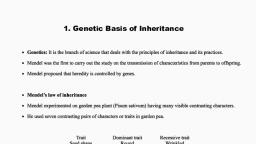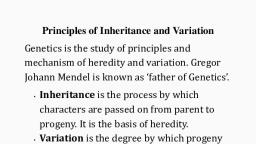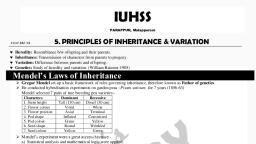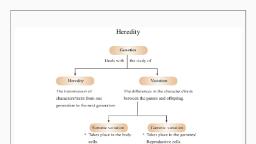Page 1 :
Deviation from Mendelism, 1. Incomplete Dominance, Incomplete dominance is the phenomenon where none of the two alleles of a gene, is dominant over each other, so that when both of them are present together, a new, intermediate phenotype is obtained., T h e inheritance of flower colour in the dog flower, , apdragon or Antirrhinum sp.) is, , a good example to understand incomplete dominance. The Fa phenotype did not, resemble either of the two parents and was in between the two., , In a cross between the true-breeding red-flowered (RR) and true-breedingwhite, flowered plants (r), the Fi (Rr) was pink., , When the Fiwas self-pollinated the Fa resulted in the following ration 1 (RR) Red:2, (Rr) Pink: 1 (rr) White. Here, the genotypic ratios were exactly as we would expect in, , any Mendelian monohybrid cross, but the phenotypic ratios had changed to 1 (red):, 2 (pink): 1 (white). Therefore, genotypic and phenotypic ratio of Fagenerationin, incomplete dominance is always same., ernrat, w, , r©, , one allele is incemple, pleteiy, , iele, , T h e reason of this is that genes of red colour is incompletely dominant over the, genes of white colour.
Page 2 :
2. Co-dominance, I n co-dominance, both the alleles of a gene express themselves simultaneously, i.e.,, Figeneration resembles both parents., , Red blood cellsthat determine ABO blood grouping in human beings explain codominance. ABO blood groups are controlled by the gene I., The gene () has three alleles ,, and i., , Humans are diploid organisms; each person possesses any two of the three /gene, alleles., , Aand Pare completely dominant over i, in other words when Aand i are present, , only A expresses, and when / and i are present, then P expresses. But when A and, are present together, then they both express: this is because of co-dominance., , 3. Multiple Allelism, There are three different a alleles, and six different combinations of these three, alleles are possible, and therefore, a total of six different genotypes of the human, , ABO blood types., Presence of more than 2 alleles of gene occupying same locus on chromosome is, called multiple allele., , ABO blood grouping also provides a good example of multiple alleles. There are, three alleles which govern the blood group, , character, , Table: Genetic basis of blood groups in human population, , Allele from Parent 1, , Allele from Parent 2, , Genotype of, , Blood types of, , offspring, , offspring, A, , AB, , A
Page 3 :
ii, , Inheritance of Two Genes, Law of Independent Assortment, Mendel crossed pea plants that differed in two characters, eg, a cross between a, pea plant that had seeds with yellow colour and round shape and one that had seeds, , of green colour and wrinkled shape., The yellow colour was dominant over green and round shape was dominant over, wrinkled., H e used the genotypic symbols Y for dominant yellow seed colour and y for recessive, green seed colour, R for round shaped seeds and r for wrinkled seed shape. The, genotype of the parents can then be written as RRYY and rry. The gametes RY and, , ry unite on fertilisation to produce the Fi hybrid RrYy. When Mendel self hybridised, , the Fa plants he found that 3/4h of Fa plants had yellow seeds and 1/4h had green., The yellow and green colour segregated in a 3:1 ratio. Round and wrinkled seed, shape also segregated in a 3:1 ratio; just lke in a monohybrid cross., , I n the dihybrid cross, the phenotypes round yellow; wrinkled yellow; round green, , and wrinkled green appeared in the ratio 9:3:3:1., Based upon the observations on dihybrid crosses, Mendel proposed a law called, Mendel's Law of Independent Assortment. The law states that 'when two pairs of, traits are combined in a hybrid, segregation of one pair of characters is independent, , of the other pair of characters.
Page 4 :
P generation, , Nound yl, , w, , *, , Aatnetes, , Round yellow, , generation, , Gametes, , Carmetes, , YY, , Reneration, TY, , e y p l e ratte i round yellow : round geen: wrinked yellow : wrinkled green, , 3, , 9, , Fig: Result of a dihybrid cross where the two parents differed in two pairs of, contrasting traits: seed colour and seed shape., , Table: Simple mathematical rules useful in solving genetics, , Number of, , Number of, , Number of, , problems, , Number of, , heterozygous gene, , different types of, , different, , different, , pairs, , gametes formed, , genotypes, , phenotypes, , produced, , produced, , 2", , eg, if n=1
Page 5 :
Dihybrid test cross, The progeny obtained from dihybrid test cross are four types and each of them is, , 25%., , Fa dihybrid, , Recessive parent, , TtRr, , TR, TtRr, , ttrr, , Tr, , Ttrr, , tr, , ttrr, , ttrr, , The ratio of dihybrid test cross= 1:1:1:1, Intergenic interaction: Modification of effect of a gene under the influence of a nonallelic gene, i.e., a gene at different locus is termed as Intergenic interaction. It may, be expressed in following forms:, , a) Complementary genes: If two genes present on different loci produce the, same effect when present alone but interact to form a new trait when, present together, they are called complementary genes. The F2dihybrid ratio, is9:7., , b) Supplementary genes: These are two non-allelic genes in which one type of, gene produces its effect whether the other is present or not and the second, , gene produces its effect only in the presence of the first, usualy forming a, new trait. The Fz dihybrid phenotypic ratio is 9:3:4., , c)Epistasis: It is a phenomenon in which onegene suppresses or masks the, expression of other gene., d) Pleiotropic: When a gene affects many aspects of phenotype or controls, several phenotypes, it is said to be pleiotropic gene and this phenomenon is, , called pleiotropy.

